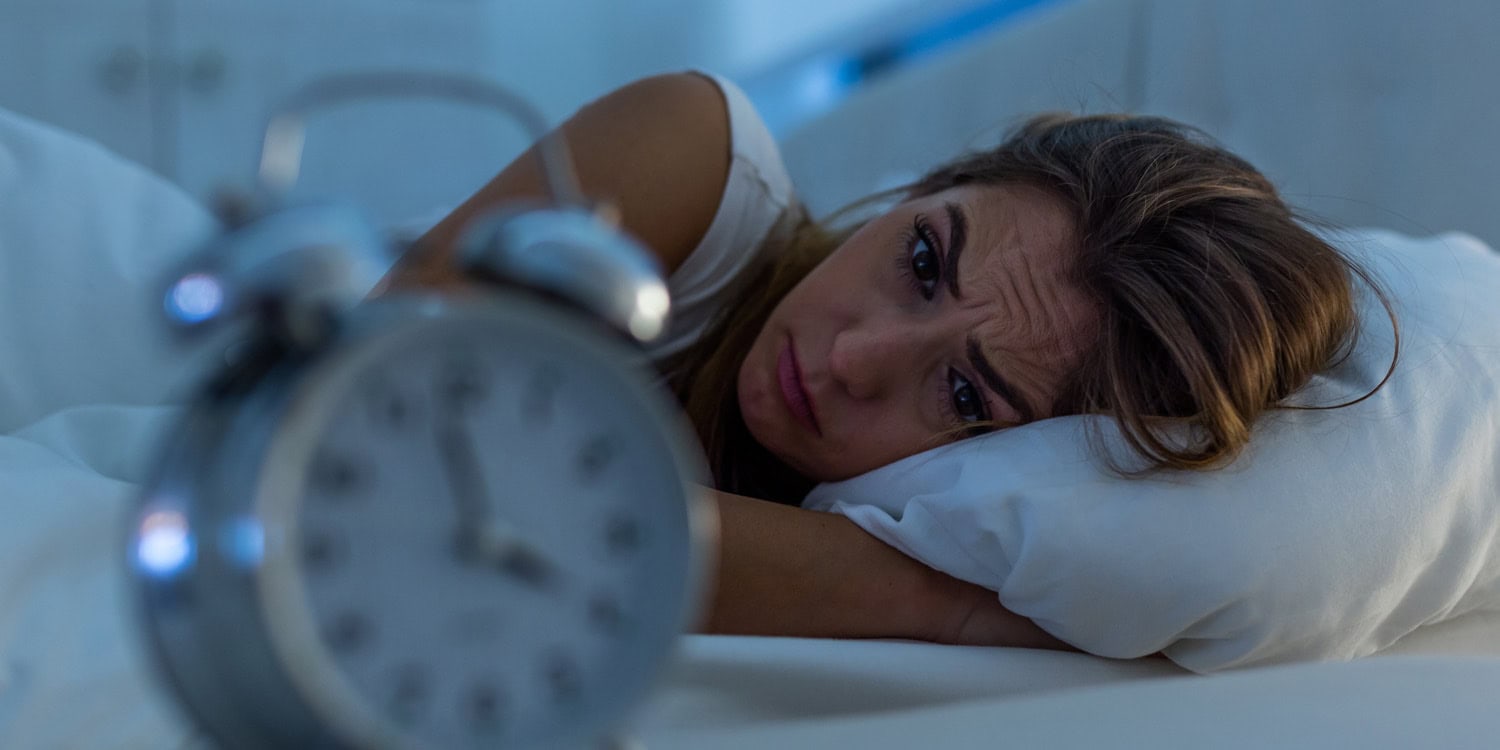A recent study published in the Journal of Psychiatric Research suggests that people with insomnia experience heightened levels of hyperarousal—a state of persistent tension or restlessness—compared to those without sleep difficulties, especially in the morning. This arousal was also found to increase more sharply overnight in response to poor sleep quality. Researchers hope that these findings will inspire new treatment approaches that address sleep quality to help reduce daytime hyperarousal in those affected by insomnia.
The researchers conducted the study to better understand hyperarousal, a condition often associated with anxiety, stress, and sleep disorders like insomnia. While hyperarousal is widely recognized as a key symptom in insomnia, it has been inconsistently defined and measured, complicating research on its specific characteristics and effects.
Hyperarousal involves both physiological responses, such as increased cortisol, and psychological responses, like stress and tension. However, its variability over time, especially in response to changes in sleep, has remained unclear. The researchers aimed to pinpoint how hyperarousal fluctuates in real time and its relationship with night-to-night variations in sleep quality among people with insomnia.
“Hyperarousal is assumed to be a key symptom of insomnia – however, researchers talk about wildly different things when speaking of hyperarousal, ranging from feelings of restlessness, to increased stress hormones measured in the saliva to high-frequency brain waves during sleep,” explained study author Lara Rösler, a postdoctoral researcher at the Sleep and Cognition Group of the Netherlands Institute for Neuroscience.
“Additionally, we did not previously know whether being hyperaroused is a constant trait of people with insomnia or whether it fluctuates within and across days and what drives these fluctuations. So we wanted to better understand, using a data-driven approach, which subjective feelings and emotions are characteristic of hyperarousal and which aspects of (poor) sleep contribute to it.”
To achieve their goals, the researchers recruited 207 adults aged 18 to 70, including 169 people diagnosed with insomnia and 38 without sleep problems as a control group. Participants were recruited through the Netherlands Sleep Registry and advertisements, with the criteria for insomnia diagnosis based on standard clinical definitions. Exclusions included participants with certain severe mental or neurological conditions, active treatment for major depression, or specific sleep disorders, among others.
Before starting the nine-day main phase of the study, participants completed several questionnaires assessing sleep habits and emotional well-being. During the nine-day observation period, participants used mobile phones to complete assessments eight times a day when prompted by a beep. They also provided additional entries upon waking up and before bedtime, logging aspects of their emotional state, sleep quality, and overall arousal levels.
To capture objective data, participants wore actigraphy devices on their wrists, which continuously monitored movements and skin temperature as indirect markers of sleep patterns. The wrist device allowed the researchers to measure physical restfulness, duration and quality of sleep, and the timing of core body temperature rhythms, which are influenced by sleep and circadian patterns. The participants also completed a sleep diary each morning, detailing aspects like time spent in bed, the time it took to fall asleep, and their subjective sleep quality.
Through these daily self-reports and actigraphy, the researchers collected and analyzed thousands of individual data points. They used a statistical method called exploratory factor analysis to identify a hyperarousal factor, defined as a distinct emotional state encompassing feelings of tension, stress, and irritability. They then tracked how this hyperarousal factor changed throughout each day and overnight.
The study’s findings revealed several distinct patterns in hyperarousal. First, people with insomnia consistently scored higher on hyperarousal than those without sleep issues. Their hyperarousal levels were elevated at all times of day but were particularly high in the morning and tended to decrease as the day went on. Although all participants showed a peak in hyperarousal in the morning, this overnight increase was much more pronounced for those with insomnia. This finding suggests that people with insomnia may struggle to “wind down” during sleep, leading to elevated tension upon waking.
The researchers also found that nights of poor sleep quality were strongly associated with higher levels of hyperarousal the next morning. Sleep quality was determined both by subjective reports and by the timing of certain physiological indicators like wrist temperature. When participants reported poor sleep quality in the morning, they tended to experience a larger overnight increase in hyperarousal. Specific markers of sleep, such as the amount of time spent asleep and the efficiency of that sleep, also played a role in morning hyperarousal levels.
“Hyperarousal is largely characterized by feelings of stress and restlessness and is consistently higher in people suffering from insomnia than in normal sleepers,” Rösler told PsyPost. “Crucially, hyperarousal is strongest in the morning right upon awakening and our data shows that this is largely driven by perceived sleep quality rather than objective markers of sleep – the more dissatisfied you are with your previous night of sleep, the more hyperarousal you’ll likely be experiencing.”
“We were surprised to see that perceived sleep quality was more strongly associated with hyperarousal than any other individual sleep features, such as total sleep time or the time spent awake after initial sleep onset. So rather than the total hours of sleep you get, the satisfaction with your sleep is what drives your feeling of hyperarousal.”
Despite these new insights, the study has some limitations. The researchers did not use direct, clinical measurements of brain activity during sleep (such as polysomnography), which would have provided more precise data on REM sleep — the sleep stage associated with vivid dreams — and its potential role in hyperarousal. The researchers noted that fragmented REM sleep is often linked with a state of high stress and emotional instability the next day.
“We used sleep diaries and actigraphy watches to evaluate sleep, but this did not allow for the investigation of specific sleep stages,” Rösler explained. “Using EEG wearables would have enabled us to investigate the question whether changes in REM sleep are associate with perceived sleep quality and increased hyperarousal – a hypothesis we are currently exploring in a follow-up study.”
The study sets a foundation for developing treatments focused on enhancing sleep quality as a potential way to alleviate daytime hyperarousal symptoms in people with insomnia.
“We are hoping to get a better understanding of the neurobiological mechanisms that contribute to the link between hyperarousal and poor sleep,” Rösler said. “At the moment, we are studying how noradrenergic medication affects both sleep features and daytime hyperarousal and anxiety symptoms to evaluate to what extent the locus coeruleus, the main hub of noradrenaline in the brain, might be involved in this process.”
The study, “Hyperarousal Dynamics Reveal an Overnight Increase Boosted by Insomnia,” was authored by Lara Rösler, Erik-Jan van Kesteren, Jeanne Leerssen, Glenn van der Lande, Oti Lakbila-Kamal, Jessica C. Foster-Dingley, Anne Albers, and Eus J.W. van Someren.




